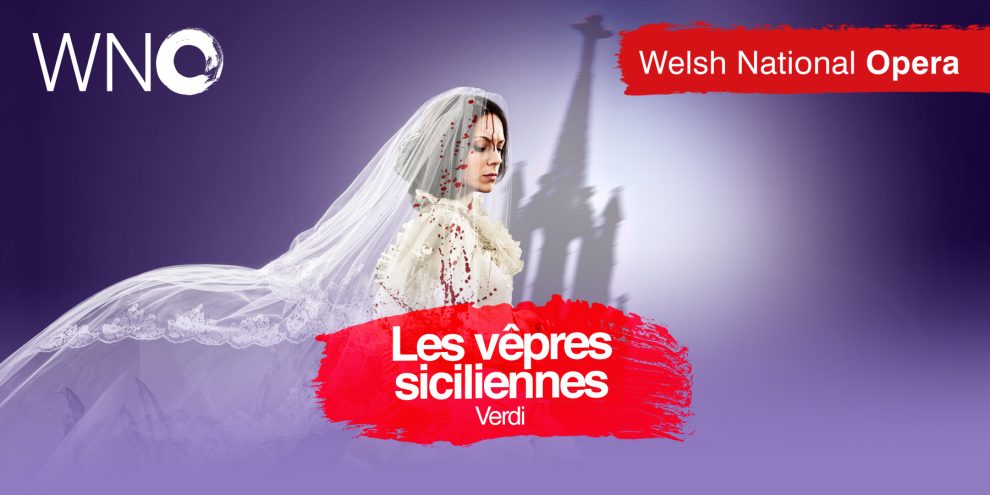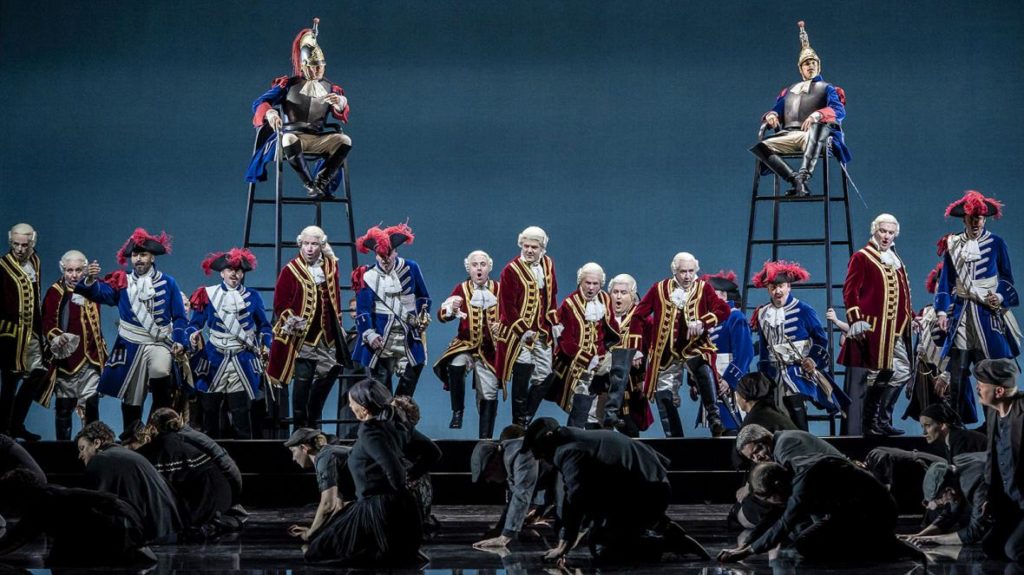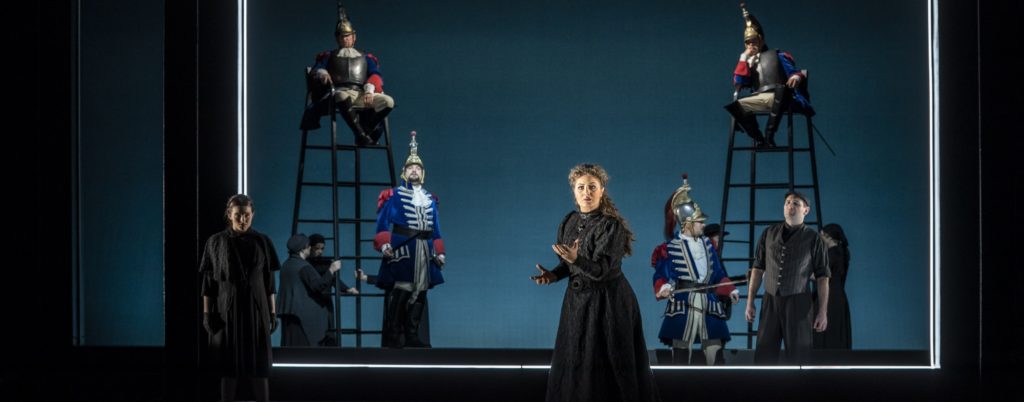 (3 / 5)
(3 / 5)

Produced by the Welsh National Opera, Les Vepres Siciliennes, stands as one part of the trilogy released this spring term. This was my first experience of an opera, only previously dabbling my toes in with WNO’s collaboration with National Dance Company Wales in Parade. I felt like something which utilised dance in which I’m more familiar would act as a great entry to the world of opera. And in that, I was correct.
Before the performance began, both at the very beginning and after the interval, the orchestra gave an instrumental opening. This transcended us into the themes of the piece, providing context and a gateway for what we were being propelled into. These were incredible and whisked you in and out of your own thoughts, trying to make sense and pre-empt what was to come.
As the curtains raised, a simple, stripped back set emerged. A rectangular frame which was lit with a box light, formed a storyboard backdrop in which the piece would take place. The set remained as one of my favourite components within the piece, it really made the performance more modern and with the constant re-arranging of various frames, kept the audience’s attention focussed. The frames allowed the audience to see difference upon the stage and engage in different perspectives, that of memories of the past and the difference of location in the present. However, one concern from the set is that due to its’ abstract nature, it reduces the accessibility of the piece. For those with hearing difficulties, the lack of a definitive nature within the background provides no context and makes the plot hard to follow. Also due to the thickness of the frames, your view is restricted regardless of positioning of seat which means at times you can’t see key moments of what’s occurring on stage.
Also, along the terms of accessibility, the placement and structuring with the subtitles was problematic. It was severely difficult to see the stage and read the subtitles at the same time so often important moments of the plot were missed (both in context from the subtitles and in performance on the stage). It also became confusing when two characters were holding a conversation as there was no way to see difference within the text as to who was stating what and whether the text was in time with the vocals or not. I would propose maybe matching a colour to a performer and from there more of an understanding could be built.
The imagery throughout the piece was beautiful in its simplicity. It played with shadows and outlines and how people fell into and out of the light using silhouettes to make powerful, thought provoking statements. The use of darkness created the ambience for the work but was broken by bright coloured costumes which created contrast from the otherwise black costumes.
A piece of imagery that still resonates with me now is that of a gold table being dragged around the stage with the dancers limp and naked, draped over the table like meat at a banquet dinner. This embodiment from the dancers really added depth to the performance throughout and I often found the moments in which the dancers were included provided the much-needed breath for the performance, often bringing a sense of lightness to what would be an otherwise dark stage. The involvement of such an abundance of dance within the opera was a brilliant decision as added the much needed movement and transitions onto the stage. This also provided light-heartedness and a more intense context for what was happening within the storyline.

I felt the performers, both ensemble and main cast, otherwise lacked the embodiment of their characters which was needed. They sang and performed beautifully but the small details such as the realism of touch and emotion seemed absent. For example, at times of compassion, hands were resistant from those whom they were compassionate towards. These moments were both when the performers were acting and responding to what was being sang. This intention would normally provide clarity into the storyline of the piece and without investment from the characters, the emotional plot of the story became difficult to follow.

In Summary Les Vepres Siciliennes provided a perfect gateway for me into the world of opera. The mixture of dance, choreographed by Caroline Finn, and opera made it a lot more accessible for me and with such beautiful imagery throughout I was enchanted and engaged.
